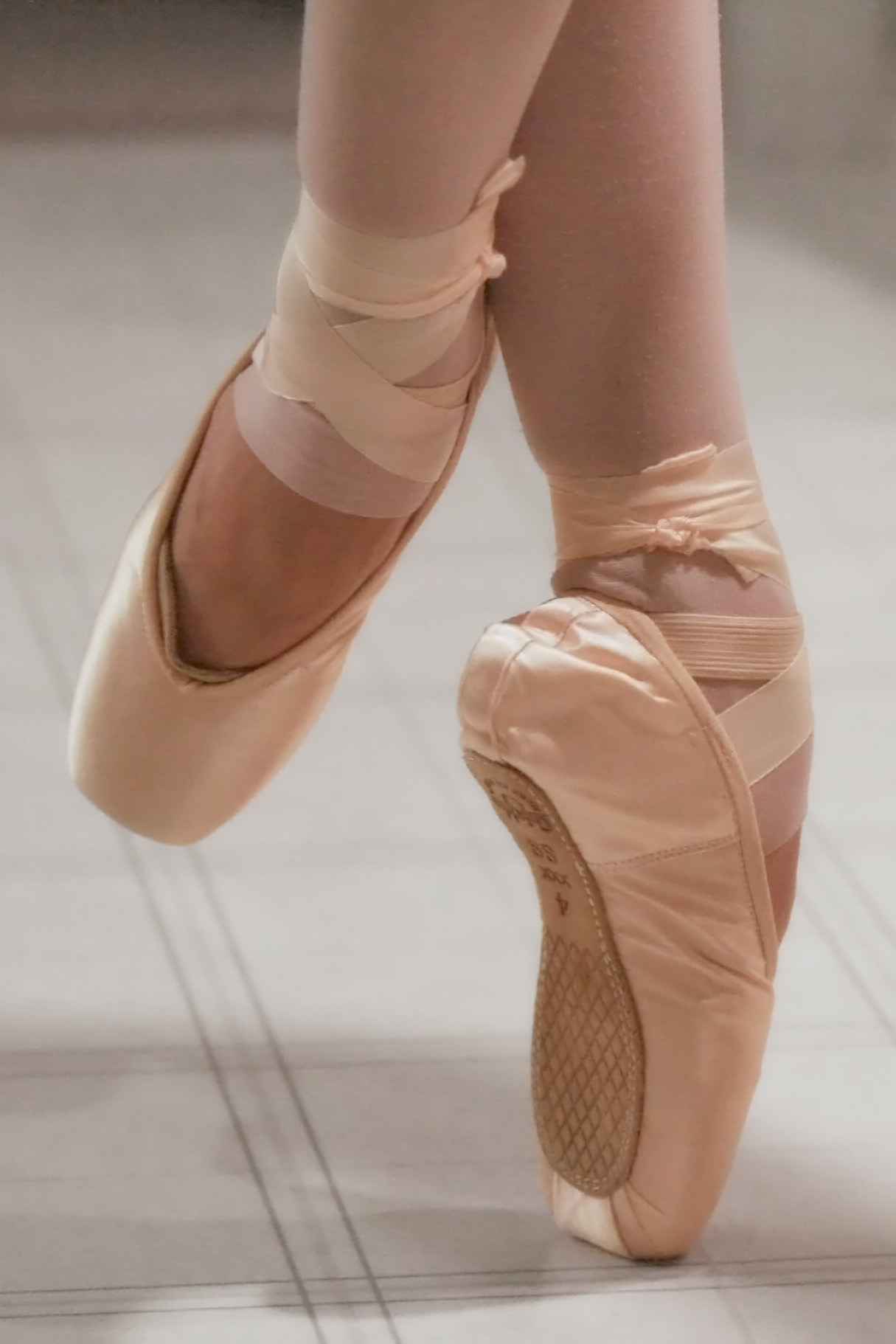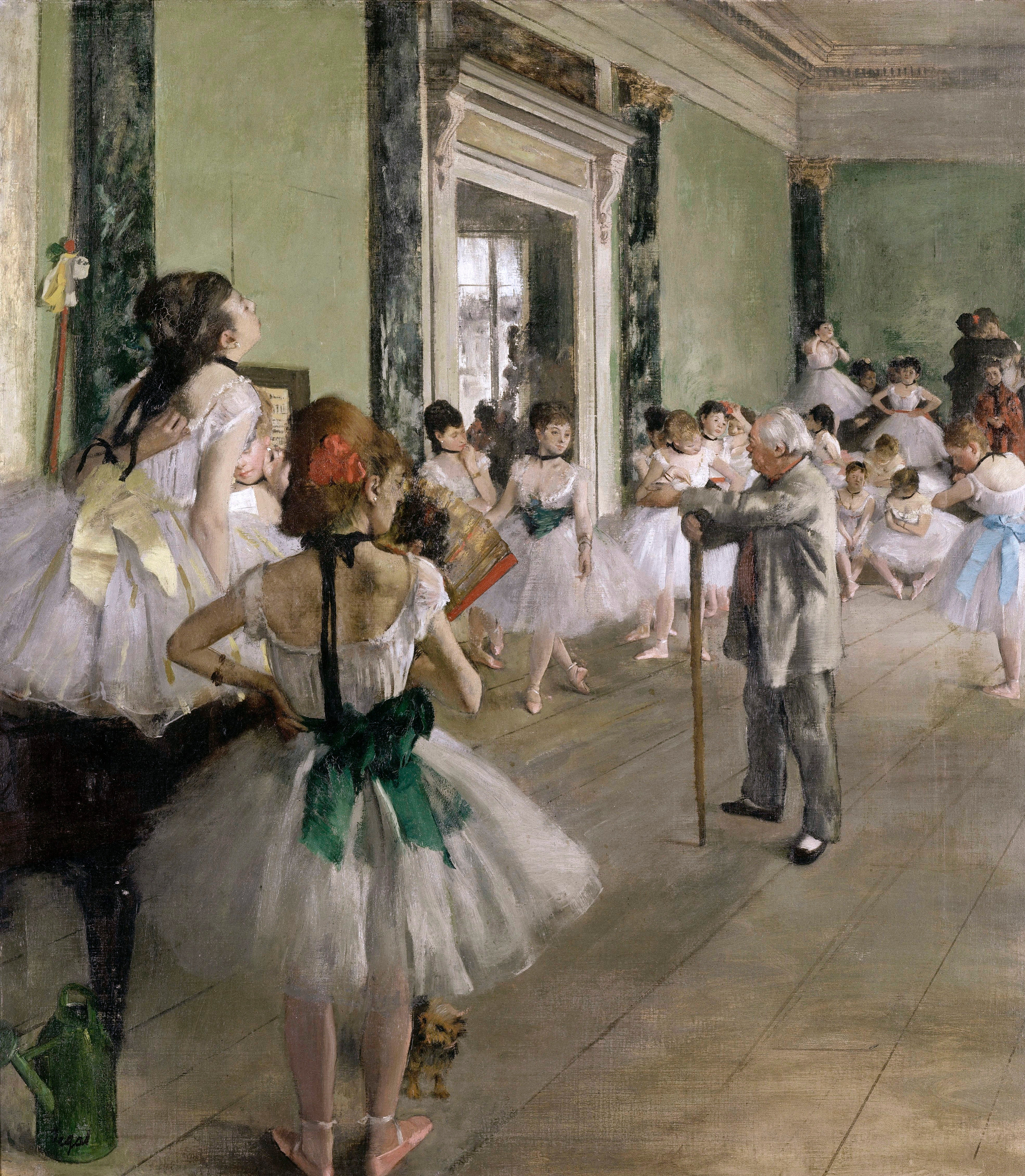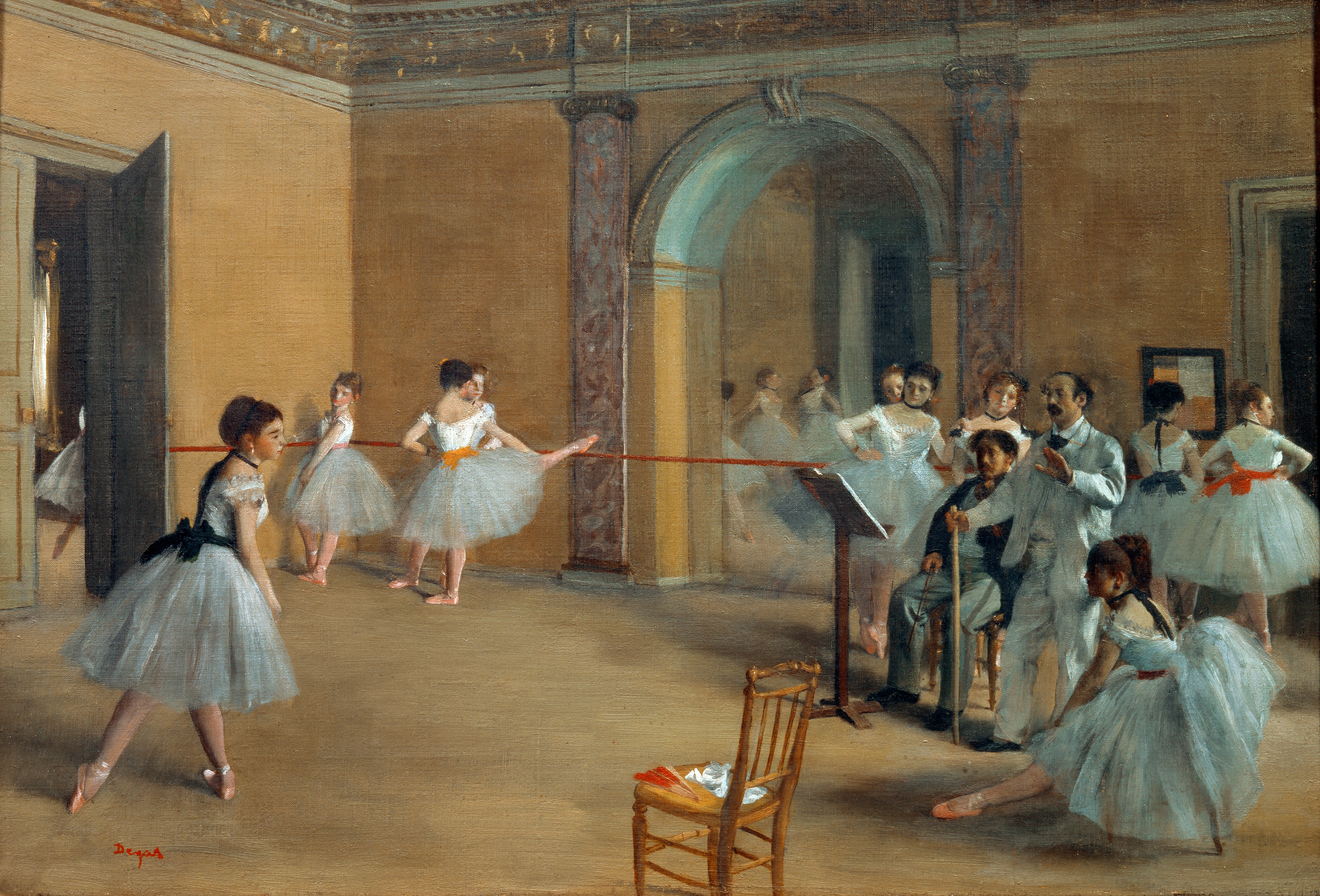|
Pointe
Pointe technique ( ) is the part of classical ballet technique that concerns ''pointe work'', in which a ballet dancer supports all body weight on the tips of fully extended feet within pointe shoes. A dancer is said to be ''en pointe'' () when the dancer's body is supported in this manner, and a fully extended vertical foot is said to be ''en pointe'' when touching the floor, even when not bearing weight. Pointe technique resulted from a desire for female dancers to appear weightless and sylph-like. Although both men and women are capable of pointe work, it is most often performed by women. Extensive training and practice are required to develop the strength and technique needed for pointe work. Typically, dance teachers consider factors such as age, experience, strength and alignment when deciding whether to allow a dancer to begin pointe work. Technique Pointe technique encompasses both the mechanical and artistic aspects of pointe work. In particular, it is concerned wit ... [...More Info...] [...Related Items...] OR: [Wikipedia] [Google] [Baidu] |
Pointe Shoe
A pointe shoe (, ), also called a ballet toe shoe or simply toe shoe, is a type of shoe worn by ballet dancers when performing pointe work. Pointe shoes were conceived in response to the desire for dancers to appear weightless and sylph-like and have evolved to enable dancers to dance ''en pointe'' (on the tips of their toes) for extended periods of time. They are manufactured in a variety of colors, most commonly in shades of light pink. History Women began to dance ballet in 1681, twenty years after King Louis XIV of France ordered the founding of the Académie Royale de Danse. At that time, the standard women's ballet shoe had heels. Mid-18th century dancer Marie Camargo of the Paris Opéra Ballet was the first to wear a non-heeled shoe, enabling her to perform leaps that would have been difficult, if not impossible, in the more conventional shoes of the age. After the French Revolution, heels were completely eliminated from standard ballet shoes. These flat-bottomed pred ... [...More Info...] [...Related Items...] OR: [Wikipedia] [Google] [Baidu] |
Glossary Of Ballet
Because ballet became formalized in France, a significant part of ballet terminology is in the French language. A À la seconde () (Literally "to second") If a step is done "à la seconde," it is done to the side. 'Second position'. It can also be a balance extending one foot off the ground in ‘Second Position’. À la quatrième () One of the directions of body, facing the audience (''en face''), arms in second position, with one leg extended either to fourth position in front (''quatrième devant'') or fourth position behind (''quatrième derrière''). À terre () Touching the floor; on the floor. Adagio Italian, or French ''adage'', meaning 'slowly, at ease.' # Slow movements performed with fluidity and grace. # One of the typical exercises of a traditional ballet class, done both at barre and in center, featuring slow, controlled movements. # The section of a '' grand pas'' (e.g., '' grand pas de deux''), often referred to as ''grand adage'', that features dance part ... [...More Info...] [...Related Items...] OR: [Wikipedia] [Google] [Baidu] |
Piqué (ballet)
Because ballet became formalized in France, a significant part of ballet terminology is in the French language. A À la seconde () (Literally "to second") If a step is done "à la seconde," it is done to the side. 'Second position'. It can also be a balance extending one foot off the ground in ‘Second Position’. À la quatrième () One of the directions of body, facing the audience (''en face''), arms in second position, with one leg extended either to fourth position in front (''quatrième devant'') or fourth position behind (''quatrième derrière''). À terre () Touching the floor; on the floor. Adagio Italian, or French ''adage'', meaning 'slowly, at ease.' # Slow movements performed with fluidity and grace. # One of the typical exercises of a traditional ballet class, done both at barre and in center, featuring slow, controlled movements. # The section of a ''grand pas'' (e.g., ''grand pas de deux''), often referred to as ''grand adage'', that features dance partn ... [...More Info...] [...Related Items...] OR: [Wikipedia] [Google] [Baidu] |
Sauté (ballet)
Because ballet became formalized in France, a significant part of ballet terminology is in the French language. A À la seconde () (Literally "to second") If a step is done "à la seconde," it is done to the side. 'Second position'. It can also be a balance extending one foot off the ground in ‘Second Position’. À la quatrième () One of the directions of body, facing the audience (''en face''), arms in second position, with one leg extended either to fourth position in front (''quatrième devant'') or fourth position behind (''quatrième derrière''). À terre () Touching the floor; on the floor. Adagio Italian, or French ''adage'', meaning 'slowly, at ease.' # Slow movements performed with fluidity and grace. # One of the typical exercises of a traditional ballet class, done both at barre and in center, featuring slow, controlled movements. # The section of a ''grand pas'' (e.g., ''grand pas de deux''), often referred to as ''grand adage'', that features dance partne ... [...More Info...] [...Related Items...] OR: [Wikipedia] [Google] [Baidu] |
Ballet
Ballet () is a type of performance dance that originated during the Italian Renaissance in the fifteenth century and later developed into a concert dance form in France and Russia. It has since become a widespread and highly technical form of dance with its own vocabulary. Ballet has been influential globally and has defined the foundational techniques which are used in many other dance genres and cultures. Various schools around the world have incorporated their own cultures. As a result, ballet has evolved in distinct ways. A ''ballet'' as a unified work comprises the choreography and music for a ballet production. Ballets are choreographed and performed by trained ballet dancers. Traditional classical ballets are usually performed with classical music accompaniment and use elaborate costumes and staging, whereas modern ballets are often performed in simple costumes and without elaborate sets or scenery. Etymology Ballet is a French word which had its origin in Ital ... [...More Info...] [...Related Items...] OR: [Wikipedia] [Google] [Baidu] |
Classical Ballet
Classical ballet is any of the traditional, formal styles of ballet that exclusively employ classical ballet technique. It is known for its aesthetics and rigorous technique (such as pointe work, turnout of the legs, and high extensions), its flowing, precise movements, and its ethereal qualities. There are stylistic variations related to an area or origin, which are denoted by classifications such as Russian ballet, French ballet, British ballet and Italian ballet. For example, Russian ballet features high extensions and dynamic turns, whereas Italian ballet tends to be more grounded, with a focus on fast, intricate footwork. Many of the stylistic variations are associated with specific training methods that have been named after their originators. Despite these variations, the performance and vocabulary of classical ballet are largely consistent throughout the world. History Ballet originated in the Italian Renaissance courts and was brought to France by Catherine de' ... [...More Info...] [...Related Items...] OR: [Wikipedia] [Google] [Baidu] |
Toe Box
The toe box is the section of footwear that surrounds the toes on closed-toe shoes. Toe boxes that are too tight can cause injuries and foot deformities, whereas wider toe boxes may be used to treat or prevent common foot conditions such as Morton's neuroma. Toe boxes come in a variety of shapes and styles of construction, some of which are a matter of fashion, and some of which are designed for specialized functions. Fitting The toe box of a shoe should fit the wearer's foot without cramping or compressing it. A simple way to test if a toe box is too tight is to take out the insole of the shoe and stand on it. If the toes overhang the insole, the toe box is too small for the foot. The toe box also needs enough extra room to accommodate movements of the foot, such as lengthening arches and the splay of the toes. With each step, ankles and feet bend, toes spread and flex, and the arches of the foot flatten and rebound. Because the arches flatten, the foot lengthens and widens a ... [...More Info...] [...Related Items...] OR: [Wikipedia] [Google] [Baidu] |
Ballet Technique
Ballet technique is the foundational principles of body movement and form used in ballet. It is an important aspect of ballet performance because ballet (especially classical ballet) puts great emphasis on the method and execution of movement., pp. 6-7 & 21. The techniques found in classical ballet are a framework for many other styles of dance, including jazz and contemporary ballet Contemporary ballet is a genre of dance that incorporates elements of classical ballet and modern dance. It employs classical ballet technique and in many cases classical pointe technique as well, but allows greater range of movement of the uppe .... Aspects of ballet technique include alignment, which refers to keeping the head, shoulders, and hips vertically aligned. Turnout refers to completing movements with legs rotated outward; this promotes clean footwork, graceful '' port de bras'' (movement of the arms), and correct body positions, lines and angles. Other aspects of ballet technique inclu ... [...More Info...] [...Related Items...] OR: [Wikipedia] [Google] [Baidu] |
Scuola Di Ballo Del Teatro Alla Scala
La Scala Theatre Ballet School ( it, Scuola di Ballo del Teatro alla Scala) is one of the leading classical ballet schools in the world and is the associate school of La Scala Theatre Ballet, an international ballet company based at La Scala in Milan, Italy. The school forms part of the theatre's Academy for Performing Arts. History The ballet school was founded in 1813 by Benedetto Ricci, as the ''Accademia di ballo'' (dance academy) of the ''Teatro alla Scala''. Following the defeat of Napoleon, the school's name was changed to ''Imperial Regia Accademia di Ballo del Teatro alla Scala'' (Royal Imperial Dance Academy of the Teatro alla Scala). For many years after its foundation the school offered two courses, of the total duration of eight years; the first consisted in apprenticeship, the second of specialization studies. The classes were accompanied by a violinist. Many famous dancers have been directors of the school. Among them, the famous Carlo Blasis, who joined the sc ... [...More Info...] [...Related Items...] OR: [Wikipedia] [Google] [Baidu] |
Bruise
A bruise, also known as a contusion, is a type of hematoma of tissue, the most common cause being capillaries damaged by trauma, causing localized bleeding that extravasates into the surrounding interstitial tissues. Most bruises occur close enough to the epidermis such that the bleeding causes a visible discoloration. The bruise then remains visible until the blood is either absorbed by tissues or cleared by immune system action. Bruises which do not blanch under pressure can involve capillaries at the level of skin, subcutaneous tissue, muscle, or bone. Bruises are not to be confused with other similar-looking lesions. (Such lesions include petechia (less than , resulting from numerous and diverse etiologies such as adverse reactions from medications such as warfarin, straining, asphyxiation, platelet disorders and diseases such as ''cytomegalovirus''), purpura (, classified as palpable purpura or non-palpable purpura and indicates various pathologic conditions such as ... [...More Info...] [...Related Items...] OR: [Wikipedia] [Google] [Baidu] |







.jpg)
